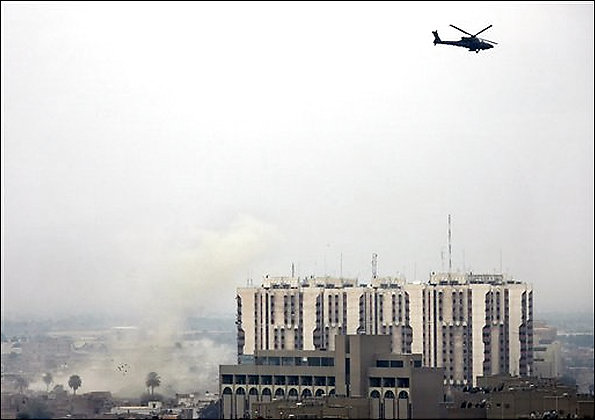Thursday, January 10, 2008
Iraq mortality studies posted by Richard Seymour

The New England Journal of Medicine (NEJM) has published an article and study [pdf] indicating that, as of June 2006, 151,000 Iraqis had suffered violent deaths since March 2003. The figures come from the Iraq Family Health Survey (IFHS), a body composed by employees of the Iraqi health ministry. It is the same team that carried out the UNDP's 2004 Iraq Living Conditions Survey. No one can fail to miss the way in which the response to this survey differs from that to the Lancet study. In the latter case, universal scorn from the British and American political classes, despite the MoD's top scientist endorsing its scientific rigour. In this case, the hallelujahs could not be louder, not because the media actually give a fuck whether it is true or not, but because they can - well, they can defend the murder of 151,000 people more easily than they can defend the murder of 600,000 or 1.2 million.
Les Roberts, a co-author of the two Lancet surveys, has offered his response here. Aside from pointing out where the surveys converge or at least bear similarities, Roberts suggests that the same body has previously drastically underestimated deaths with the result that on interviewing the same batch of households for the second time, the total child mortality rate was double their reported deaths in the previous visit. Their reported death rate for immediately before and after the invasion is much lower than that for 2002 (this is not a survey of excess deaths, so the implication is that underreporting in 2003 would lead one to expect further underreporting in 2004, 2005 and 2006). So, "the past record suggests people do not want to report deaths to these government employees."
One point of serious divergence with the 2006 Lancet survey is that this study attributes over 50% of the deaths to Baghdad and only around 30% to "High-Mortality Provinces". The Lancet survey attributed about 20% of the violent deaths to Baghdad and over 60% to those "High-Mortality Provinces". One reason for this appears to be that of the clusters they could not visit due to "security" problems (bombing and shit), 61.7% were in Anbar. Thus, to make up for it, they calibrated the figures according to the Iraq Body Count database - the database that, as we all know, is compiled from media reports, which of course are themselves blind to huge parts of the country due in part to "security" risks. Further, it is not even based on all media reports of deaths: about one in four stories in the major US press alone have been missed by the IBC's survey according to one review (cited by Roberts and Burnham). Thus, their distribution of 'reported' deaths is very much like IBC's. This distribution is counterintuitive since the largest US military operations have been conducted in towns and cities in the 'Sunni Triangle' such as Fallujah, Ramadi, Haditha and al-Qaim - all in the Anbar province. The biggest operations, such as Operation Phantom Fury, were focused in Anbar. The fiercest resistnace to the US has been based in Anbar, with the province accounting for the largest portion of attacks of all kinds in each of the three years covered.
Still, those are issues that would theoretically be resolved through debate and the input of others in the know. That isn't going to happen. Whatever the intentions of the ministry of health workers who carried out this study, its findings are now out of their hands. It is now a weapon for neutralising the findings of the Lancet survey, as per this. After all, even the real terms of the survey itself hardly matter. As Eli points out, the total mortality noted by this survey, whatever its flaws, would actually mean there were about four times as many deaths as are now being to be reported, because of the emphasis on strictly violent deaths. Back in the day, they didn't do body counts. Now, they do it perforce by way of exonerating themselves.
Labels: iraq, lancet study, stop the war










